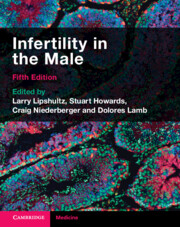Book contents
- Infertility in the Male
- Infertility in the Male
- Copyright page
- Contents
- Contributors
- Foreword
- Abbreviations
- Introduction
- Section 1 Scientific Foundations of Male Infertility
- Section 2 Clinical Evaluation of the Infertile Male
- Section 3 Laboratory Diagnosis of Male Infertility
- Section 4 Treatment of Male Infertility
- Section 5 Health Care Systems and Culture
- Chapter 28 Mental Health and Male Reproduction
- Chapter 29 Legal Issues and Male Reproduction
- Chapter 30 Male Reproduction in the Transgender Patient
- Chapter 31 Global and Cultural Aspects of Male Reproductive Care
- Index
- References
Chapter 30 - Male Reproduction in the Transgender Patient
from Section 5 - Health Care Systems and Culture
Published online by Cambridge University Press: 08 July 2023
- Infertility in the Male
- Infertility in the Male
- Copyright page
- Contents
- Contributors
- Foreword
- Abbreviations
- Introduction
- Section 1 Scientific Foundations of Male Infertility
- Section 2 Clinical Evaluation of the Infertile Male
- Section 3 Laboratory Diagnosis of Male Infertility
- Section 4 Treatment of Male Infertility
- Section 5 Health Care Systems and Culture
- Chapter 28 Mental Health and Male Reproduction
- Chapter 29 Legal Issues and Male Reproduction
- Chapter 30 Male Reproduction in the Transgender Patient
- Chapter 31 Global and Cultural Aspects of Male Reproductive Care
- Index
- References
Summary
Male-to-female transgenderism is defined as identification as female, given one’s natal or biological sex as male [1]. Recent studies have shown that there is an increase in the number of people who identify as transgender [2]. As both the prevalence and insurance coverage have increased, more patients are having gender-affirming surgery (GAS). Both hormonal therapy and surgery can significantly impact future fertility. Medical providers should be aware of treatment impact, fertility preservation (FP) options, and barriers that may prevent infertility.
- Type
- Chapter
- Information
- Infertility in the Male , pp. 525 - 533Publisher: Cambridge University PressPrint publication year: 2023

